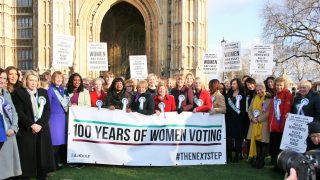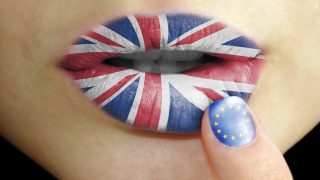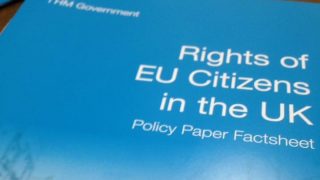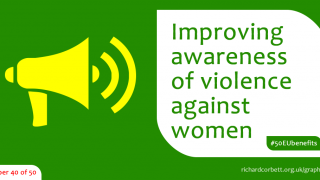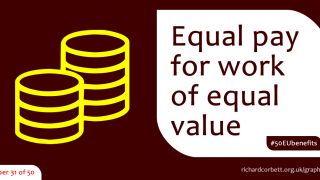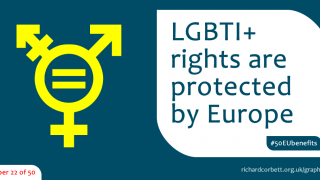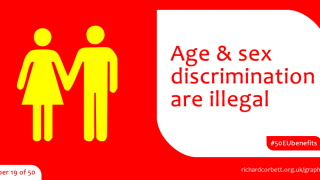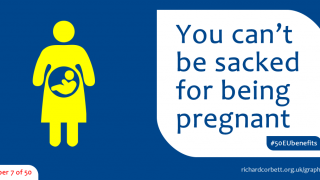Women account for 52% of the population of the European Union, but they are in the minority in businesses and parliaments, and they continue to suffer from political, social and economic discrimination. Although there is still a long way to go, action we take at EU level is helping to work towards gender equality, as well as raising awareness of this issue.
-
The Union is founded on the values of respect for human dignity, freedom, democracy, equality, the rule of law and respect for human rights, including the rights of persons belonging to minorities. These values are common to the Member States in a society in which pluralism, non-discrimination, tolerance, justice, solidarity and equality between women and men prevail.
Article 2, Treaty on the European Union
Women at work
Before joining the EU (then the EEC), the UK introduced the Equal Pay Act, which prohibited “any less favourable treatment between men and women in terms of pay and conditions of employment”.
However, it was the EU which enshrined the concept of equal pay for work of equal value in UK law and across Europe, and it’s continued to take action to promote gender equality at work, by:
- introducing measures to close the gender pension gap
- giving part time workers equal rights as full time workers. Since the majority of part-time workers are women, it’s women who benefit most from this
- introducing protections from dismissal while pregnant and paid time off for antenatal care
- increasing the number of women in employment
- encouraging countries to provide enough affordable childcare
- protecting women from sex discrimination and sexual harassment at work
The annual European Equal Pay Day aims to bring the gender pay gap to public attention each year and encourage countries to close the gap. This is especially important in the UK, where the wage difference is higher than the European average.
Our membership of the EU helps create jobs, helps our economy to thrive and provides really important employment safeguards, like maternity and paternity leave, and rules on equal pay.
Jenny Halpern Prince, chair of ‘Women for In’
For women in particular, there are things we take for granted like paid maternity leave and rules on equal pay that exist thanks to Britain’s place in the EU.
Baroness Brady
Women in business
Women constitute less than a third of start-up owners and self-employed entrepreneurs. The EU helps women get involved in business projects by providing access to finance, information and training, and encouraging them to make the most of their potential.
Women in leadership
Across the EU, women account for just 29% of members of parliament in national governments. In the European Parliament, this percentage is higher, but at 37% it is still not equal.
Outside politics, the situation gets worse. In October 2015, just 22.7% of board members of the largest companies in the EU were women.
The EU aims to achieve equality in decision-making and works with stakeholders to promote gender balance in leadership positions across a range of professions. The current aim is to achieve 40% representation of women on company boards.
Women in sport
In 2014, the European Commission adopted a proposal for gender equality in Sport which aims to:
- change recruitment policy for staff and board members
- offer apprenticeships for young female managers and coaches
- launch prevention programmes for gender-based violence in sport
- publish guidelines for organisations to promote media coverage of women’s sporting events
Physical and sexual violence
Around 1 in 3 women in the EU has experienced physical or sexual violence since the age of 15, and over half have experienced sexual harassment. It’s important that we work with our European partners to share good practice and reduce crimes committed against women.
- In March 2016, European countries agreed to adopt the Istanbul convention, which sets legally binding standards to prevent violence, protect victims, and punish perpetrators.
- The Victim Rights Directive ensures victims have reinforced protection when travelling or moving to other EU countries, and ensures they are aware of their rights.
- The EU co-funds campaigns run by national governments and supports transnational NGOs campaigning against gender violence, such as Women Against Violence Europe.
- Ending female genital mutilation in the EU and the rest of the world is among the top priorities of the European Commission’s efforts to combat violence against women.
Global action
Gender equality is identified as one of the five common principles of EU development cooperation, and Europe is committed to introducing strong gender components in policies and practices as it works with developing countries. These include promoting the economic, political and social rights of women, creating equal opportunities and providing equal access and control over resources.
Trans and intersex
The EU has worked to adopt resolutions to improve the rights of people who identify as transgender, non-binary, or intersex.
- 1989: European Parliament adopts its first resolution to prevent discrimination against transgender people, including ensuring psychological, endocrinological and cosmetic costs are reimbursed through health insurance
- 1996: The European Court of Justice hears the first EU-wide court case of transgender discrimination and recognises that sex discrimination law covers prejudices from gender reassignment
- 2010: EU holds its first transgender equality conference
- 2012: A report finds that intersex discrimination should be covered by sex discrimination law, and that operating on intersex persons without their consent violates human rights laws
There are still no explicit laws relating to gender identity and expression, but there is work being done to change this.


